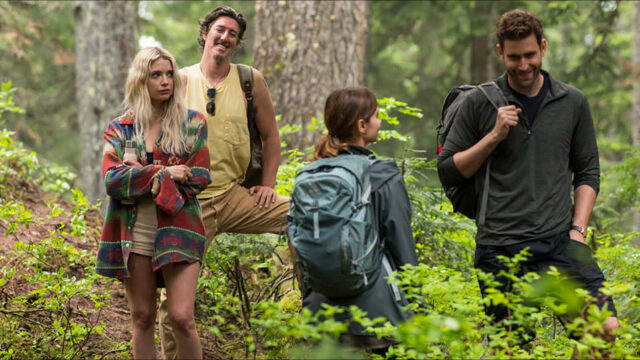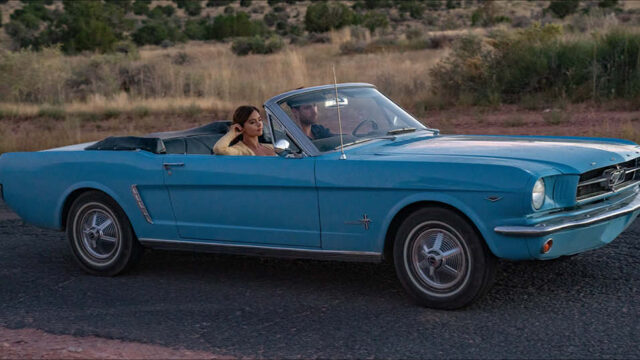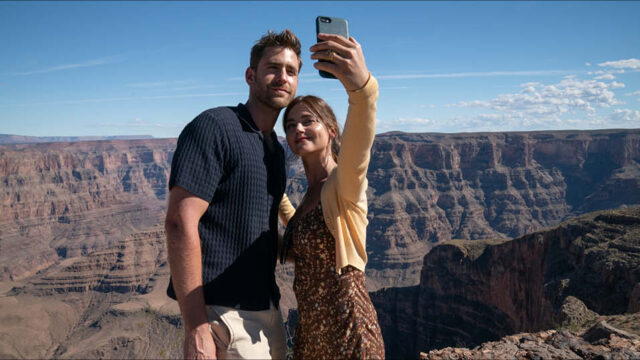For Amazon’s drama of a warring couple out in the wilderness, the team had to battle the elements of North America on a non-stop production run
Firebird Pictures’ Amazon Studios drama, Wilderness, a story of love, betrayal and revenge starring Jenna Coleman set in the wilds of the US national parks, had a wild rise to the screen, battling the elements on a non-stop shoot, all helmed by solo director, So Yong Kim.
Exec produced by Firebird’s Liz Kilgarriff and adapted by Marnie Dickens from a novel by B.E. Jones, the domestic thriller had serious scale due to the setting and, unusually, has just one director in Korean/American filmmaker, So Yong Kim.
“It is unusual” to have one director, says Kilgarriff. But “So Yong Kim is a powerhouse.” The nature of the shoot, taking place in Vancouver (stepping in for Yosemite) along with New York, Vegas and Arizona meant “we sort of had to do the journey. To have one director made that utterly doable and it meant that we were only ever in each location once.”

So Yong Kim’s CV suited too. “She comes from the world of indie filmmakers and she’s an incredible performance director,” says Kilgarriff. But also, “So understands scale and big storytelling as well.”
For Yong Kim, whose CV includes writing and directing indie movies including Treeless Mountain, In Between Days and Lovesong alongside episodic TV, it felt like a chance to blend the various elements of her work together. “In my indie films, I’ve always been a very detailed and nuanced storyteller, showing on screen internalised emotions. That was something that I wanted to do with Liv [Jenna Coleman’s character].” But also bring in the “the experiences that I’ve had in directing TV – blowing up trucks, guns, action sequences, horror moments. I wanted to blend the two elements together.”
That blend of a thriller with relationship dynamics brought in a range of influences. “When I was speaking to Jenna and Oliver [Jackson-Cohen who plays Will], we brought up Revolutionary Road and Who’s Afraid of Virginia Woolf for building tension in the relationship,” says Yong Kim. Thrillers from the 70s like Klute were also referenced. In Arizona, when the story opens, Thelma and Louise was a touchstone to give a “sense of freedom on this road trip, a new beginning.”

But helming all six was no easy task. “It sounded to me like making a very, very long feature” which was, she says “very naïve. And I said, Yeah, why not? Why don’t we just block shoot all six episodes, we keep all the team the same, and we keep moving once we start shooting.” And “it makes sense conceptually but, of course, when you get on the ground day to day, it’s a lot harder.”
But while shooting all six at once was “exhausting,” she says “personally, I love production. I love shooting.” In total the production shot for around 75 days. 63 days in Vancouver before shipping everything to New York. But it never stood still “even in Vancouver, we shot up in Whistler, and in Banff for a week and then we went Whitewater rafting, so I felt like the company was always moving,” says Yong Kim. “It’s a big circus.”
The Canadian locations had to be a stand in for California’s Yosemite National Park, but surprisingly, finding locations that could operate as the perfect stand in was “one of the most challenging elements,” says Yong Kim. “When you think of Vancouver and Whistler, you think ‘Oh, of course we’ll find Yosemite stand-ins easily,” but it proved to be harder than that. “There were so many options. It was complicated to put all the location pieces in in line, because once we started shooting, we were going to keep going. Trying to make the logistics work with 150 people and moving all the company around was quite challenging.”

The show was all about being out in the wilderness, but the crew had to deal with that too, particularly the constantly changing weather. “We were on the first day of shoot and we thought we had all the technical elements covered. But we lost signal during the middle of the shoot, because there was a sudden storm that came in, and we didn’t have any wireless connection to any of the monitors, we didn’t know if we got the footage,” says Yong Kim. A bridge scene ended up with the talent swinging in the wind “and then the rain started to come. It was completely wild. But I think it’s a testament to the crew and the cast that we pulled through and the footage looks amazing.”
It also held together due to a very tough and thorough prep work. “Prep time was extremely stressful and demanding for everybody,” says Yong Kim. “So, when we finally got to day one, everyone was so happy it didn’t matter if the towers were down or we didn’t get signal – we’re shooting!”
Jon Creamer
Share this story


















